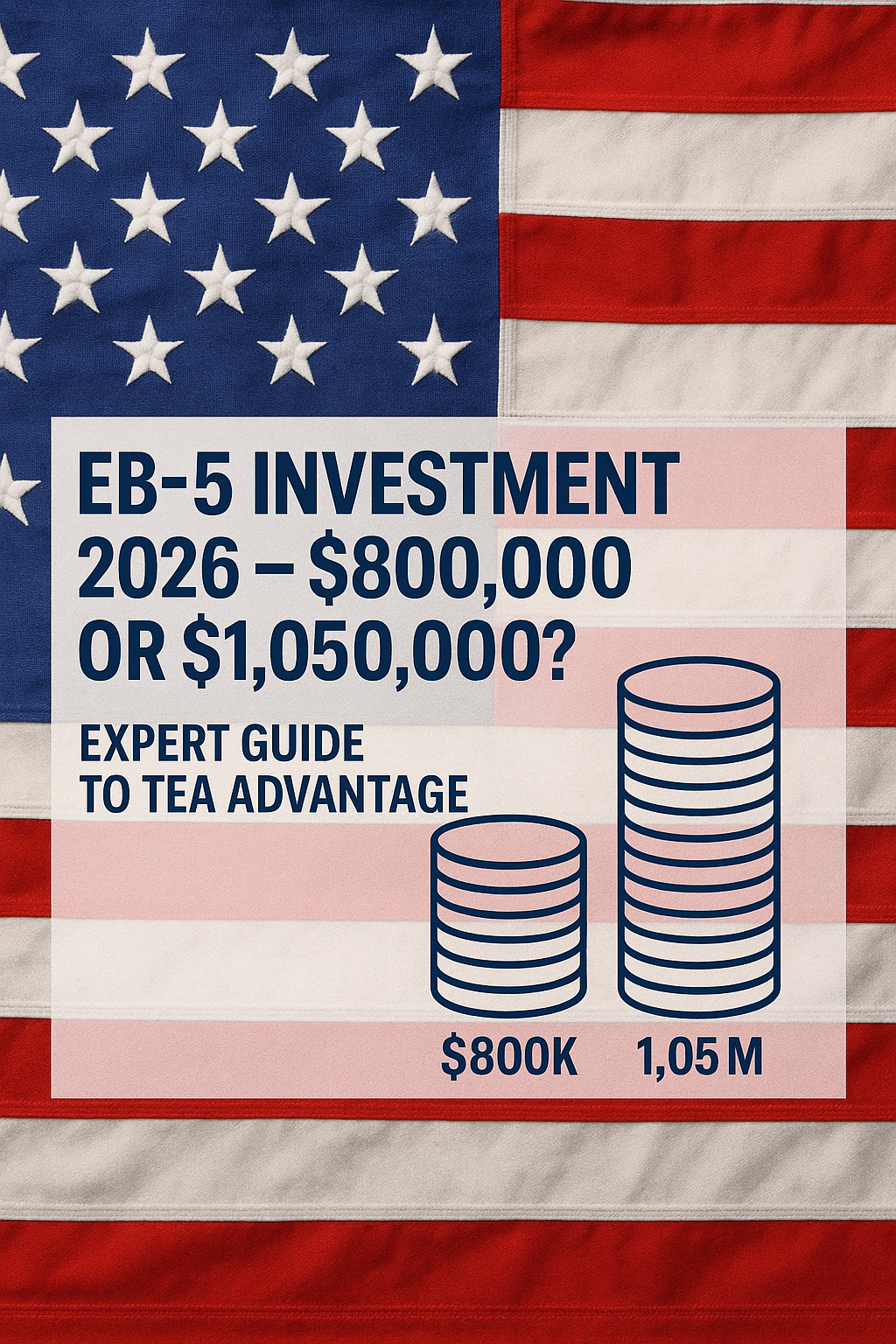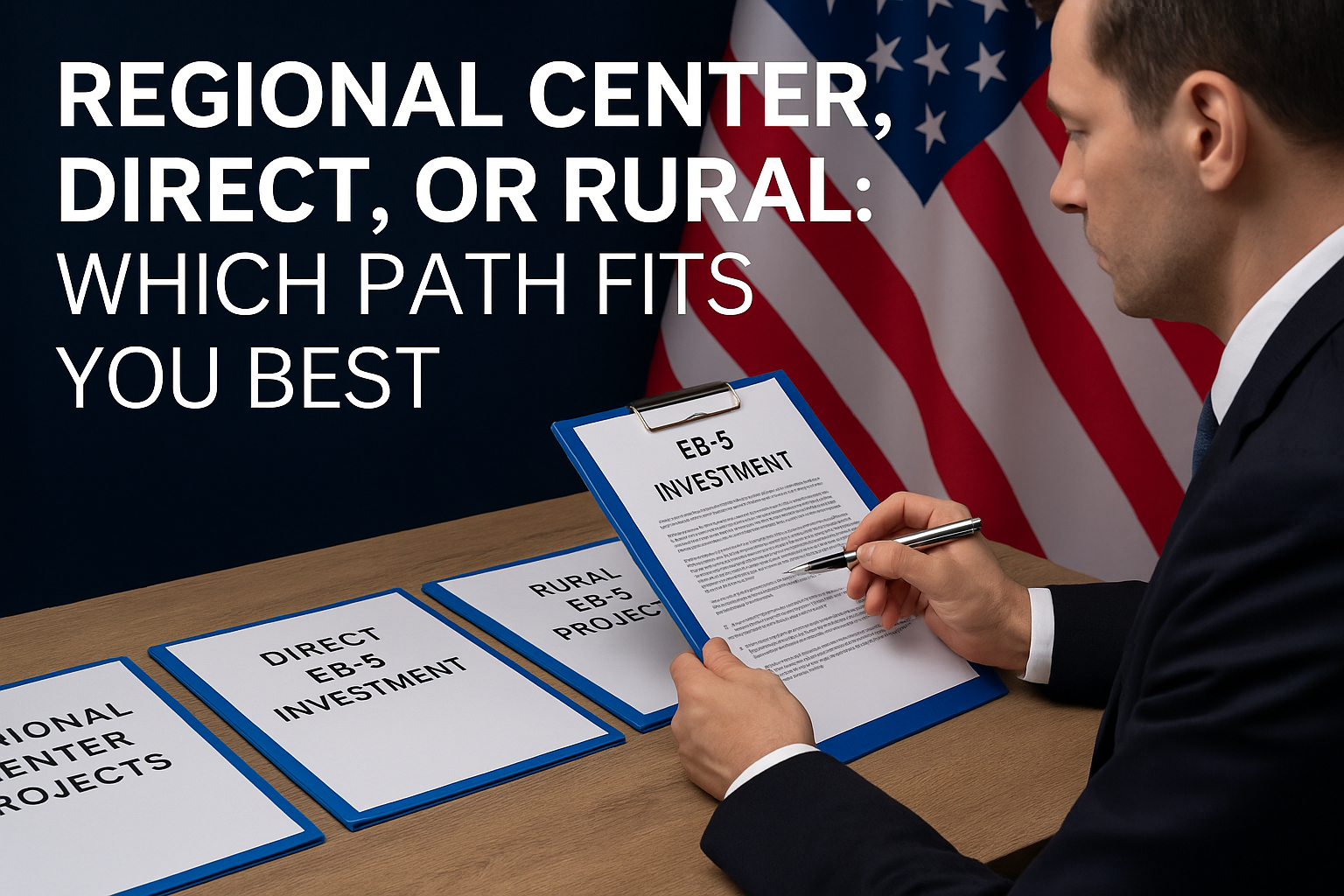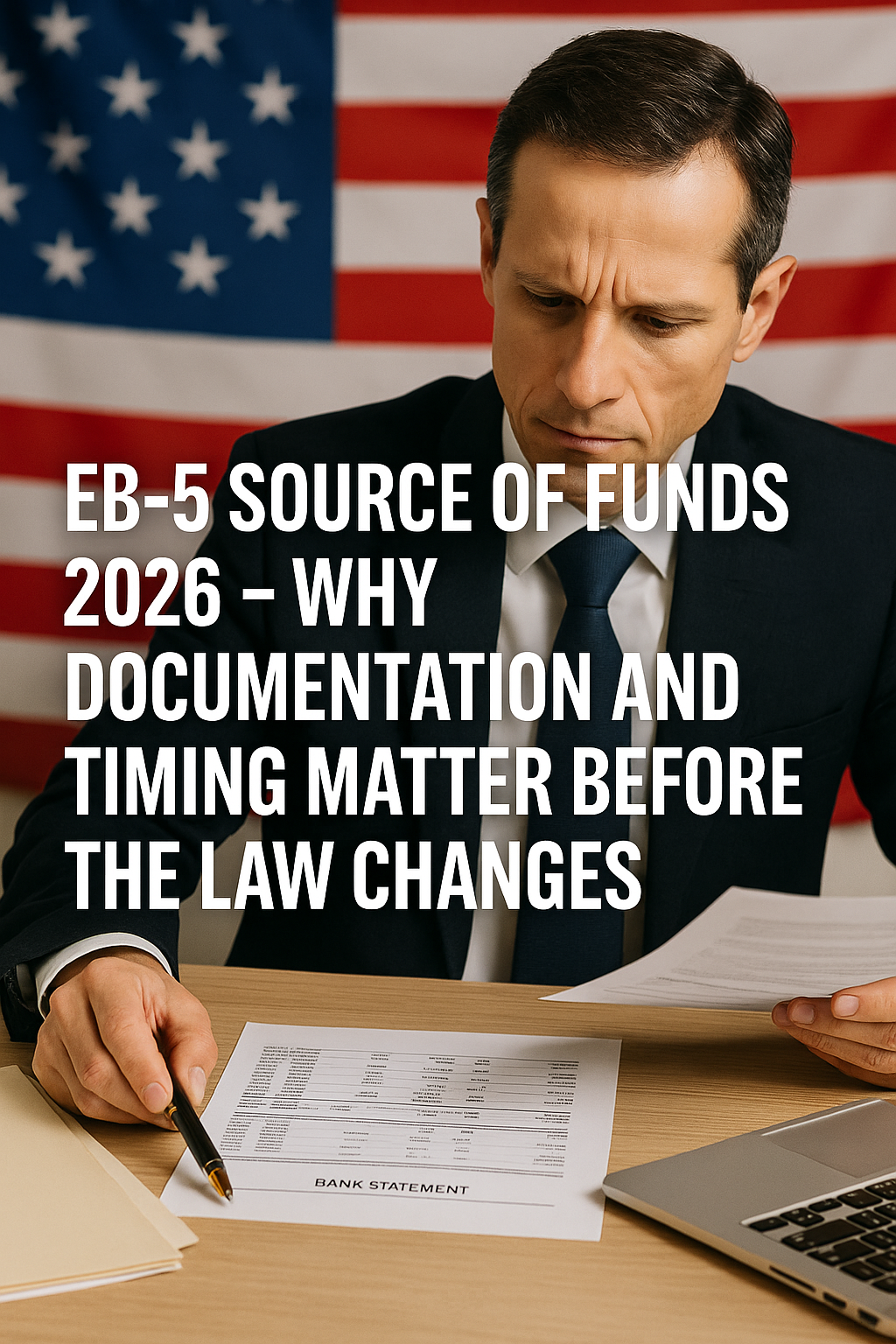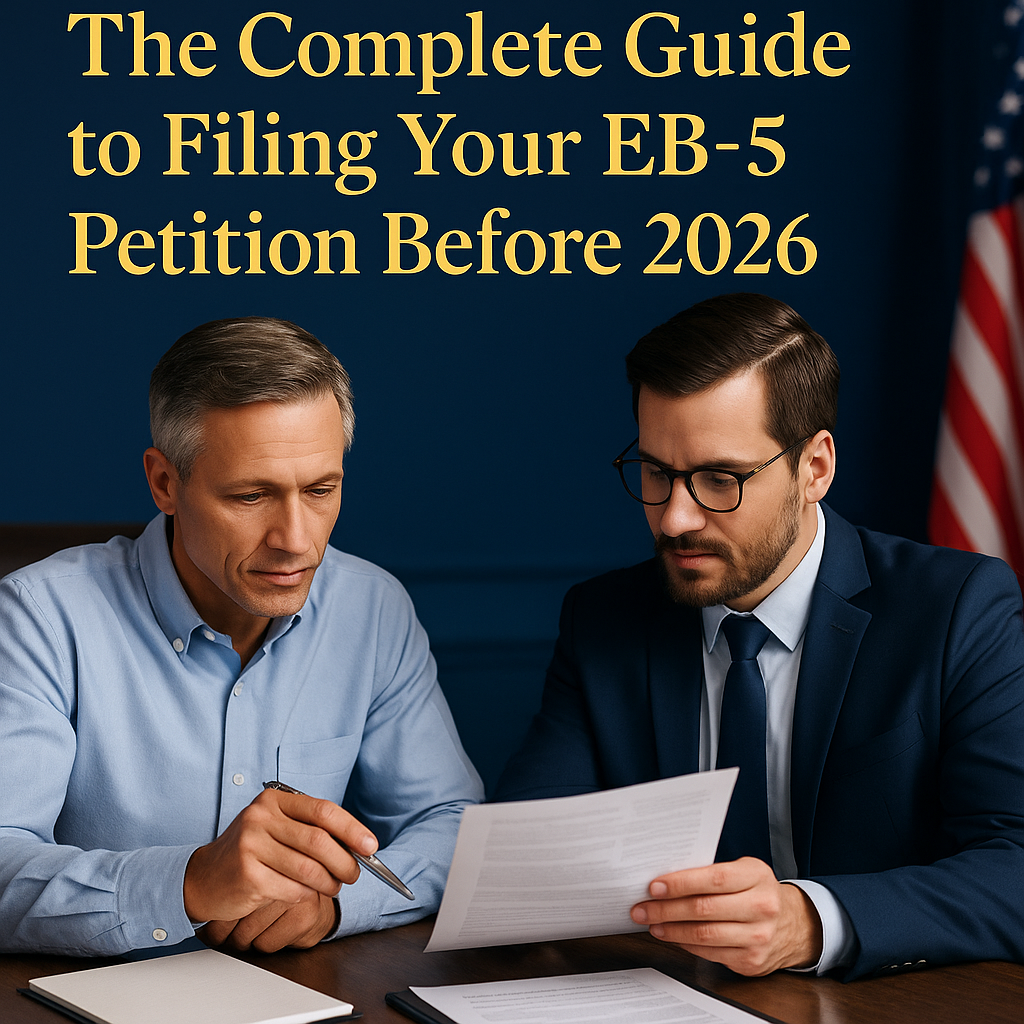Understanding the Current EB-5 Investment Thresholds
Under the EB-5 Reform and Integrity Act of 2022, which governs all new applications until September 30th, 2026, investors must commit either:
- US $800,000: for Targeted Employment Area (TEA) projects (rural or high-unemployment); or
- US $1,050,000: for non-TEA projects in developed urban areas.
These investment thresholds remain locked until the law expires. After that, the Department of Homeland Security may adjust them for inflation, a historical pattern that has always resulted in higher minimums.
💡 Expert Insight: Filing before the 2026 sunset date permanently secures your amount. Even if future EB-5 legislation increases the threshold, your petition remains protected under the existing rule.
What Qualifies as a Targeted Employment Area (TEA)?
A Targeted Employment Area (TEA) is defined as either:
- A rural area, outside metropolitan zones with fewer than 20,000 residents, or
- A high-unemployment area, with joblessness at least 150% above the U.S. national average.
Because TEAs drive investment into underdeveloped regions, the U.S. government rewards investors with:
- A reduced investment threshold ($800,000 instead of $1,050,000).
- Access to reserved EB-5 visa categories (20% for rural, 10% for high-unemployment).
- Priority USCIS processing, especially for rural projects.
For investors, TEAs offer both cost efficiency and immigration efficiency — two advantages that often outweigh the potential for higher returns in urban projects.
TEA vs Non-TEA – Weighing Your Options
| Criteria | TEA Projects ($800,000) | Non-TEA Projects ($1,050,000) |
| Purpose | Revitalize rural or high-unemployment areas | Develop commercial hubs and luxury real estate |
| Processing Speed | Priority due to visa set-asides | Standard adjudication timeline |
| Investment Entry | Lower | Higher |
| Job Creation | Direct, indirect, or induced | Direct and indirect |
| Visa Priority | Reserved categories (30% combined) | General pool |
| Return Expectation | Lower (focus on compliance) | Potentially higher (market-linked) |
| Risk Factors | Dependent on regional growth | Market-driven and project performance-based |
💡 Expert Tip:
If your goal is immigration certainty, TEA or rural EB-5 projects at $800,000 are strategically superior.
If you’re targeting asset diversification or brand-backed developments, urban investments at $1,050,000 may align better — but come with longer processing times.
The Real TEA Advantage in 2026
The TEA Advantage goes beyond saving $250,000 — it’s about visa efficiency and approval probability.
Under the current EB-5 Law 2026, the U.S. allocates a total of 32% of EB-5 visas to TEA investors:
- 20% for rural projects
- 10% for high-unemployment areas
- 2% for infrastructure projects
These reserved categories have made rural EB-5 investments the fastest route to a Green Card.
Recent USCIS trends show that rural projects receive priority adjudication, often within 12–18 months — much faster than standard urban cases.
💡 Expert Tip:
For investors from Vietnam, China, or India, rural EB-5 projects are the best strategy to bypass visa backlogs and secure approval under current conditions.
Due Diligence: How to Verify a TEA Project
Before committing to any EB-5 project, request official verification:
- TEA Certification Letter issued by a state or a qualified economist.
- Project business plan identifying census tracts and job-creation models.
- Regional Center compliance documents (Form I-956 approval).
- Third-party fund administration agreement confirming transparency.
If a developer or agent cannot provide these, it’s a red flag. Under the EB-5 Reform and Integrity Act, misrepresenting TEA status can trigger federal penalties or USCIS termination.
What If the Law Changes After 2026?
When the EB-5 Law 2026 expires on September 30th, 2026, Congress will review the program again.
Three scenarios are likely, each with serious implications for investors:
- Renewal With Increased Investment:
- The most probable outcome.
- Investment thresholds could rise to $900,000–$1,200,000 for TEA and $1.2–$1.5 million for non-TEA projects, adjusted for inflation.
- The last increase (2019) was nearly 80%.
- Temporary Suspension or Lapse:
- If Congress delays reauthorization, USCIS will pause new filings — as seen in 2021, when EB-5 processing halted for 9 months.
- Investors waiting until late 2026 may lose the opportunity to file before renewal.
- Policy Reforms:
- Lawmakers may revise definitions of “rural,” “TEA,” or introduce stricter job-creation requirements.
- While reforms improve accountability, they often add documentation complexity.
💡 Expert Insight:
Investors who file under the 2022–2026 framework preserve their rights permanently.
Even if investment levels increase or visa structures shift, your I-526E petition locks in today’s conditions.
Waiting until the next reform cycle could mean higher costs, longer processing, and greater uncertainty.
The Expert’s Take — Which Option to Choose
For most global investors, especially families from Asia, the $800,000 TEA route offers the best balance of:
- Lower investment entry,
- Reserved visa access, and
- Predictable processing timelines.
However, investors seeking commercial returns or high-profile urban projects can still benefit from the $1,050,000 pathway — provided they accept longer adjudication and prioritize developer reputation over location incentives.
Ultimately, the right choice depends on your investment goal hierarchy:
Residency first → TEA project.
Return first → Non-TEA project.
Investor Takeaway
The EB-5 thresholds: $800,000 and $1,050,000 – represent more than just entry costs. They define your strategy, timing, and risk appetite.
With the EB-5 Reform and Integrity Act set to expire in 2026, this is the most predictable and investor-friendly window in years.
After that, capital requirements will almost certainly rise.
Invest early, document thoroughly, and choose your project wisely.
Because in EB-5, the only constant is change, and the only advantage is being early.
Part of The EB-5 Countdown Series 2026
This article is part of The Immigration Magazine’s exclusive editorial series: “The Final Window: Secure Your U.S. Green Card Before the Law Changes.”
Next Article → Prepare Your Source of Funds — The Key to EB-5 Approval
Subscribe to The Immigration Magazine newsletter to receive the full series EB-5 2026 Guide, the global reference for EB-5 Visa 2026 news, TEA project analysis, and U.S. investment immigration strategy. and expert insights before the program’s renewal date on September 30th, 2026.












